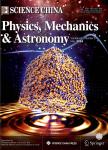Neutrinos,supernovae,and the origin of the heavy elements
Neutrinos, supernovae, and the origin of the heavy elements作者机构:School of Physics and AstronomyUniversity of MinnesotaMinneapolis 55455USA Tsung-Dao Lee InstituteShanghai 200240China
出 版 物:《Science China(Physics,Mechanics & Astronomy)》 (中国科学:物理学、力学、天文学(英文版))
年 卷 期:2018年第61卷第4期
页 面:1-6页
核心收录:
学科分类:07[理学] 070401[理学-天体物理] 0805[工学-材料科学与工程(可授工学、理学学位)] 0704[理学-天文学]
基 金:supported by the US Department of Energy(Grant No.DEFG02-87ER40328)
主 题:中微子 重元素 起源 中子俘获 爆炸 多元素 原子核 生产
摘 要:Stars of~8-100 M_⊙end their lives as core-collapse supernovae(SNe). In the process they emit a powerful burst of neutrinos,produce a variety of elements, and leave behind either a neutron star or a black hole. The wide mass range for SN progenitors results in diverse neutrino signals, explosion energies, and nucleosynthesis products. A major mechanism to produce nuclei heavier than iron is rapid neutron capture, or the r process. This process may be connected to SNe in several ways. A brief review is presented on current understanding of neutrino emission, explosion, and nucleosynthesis of SNe.



